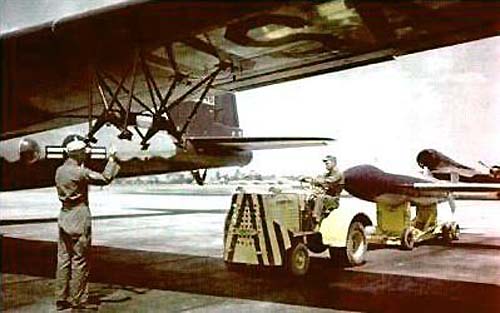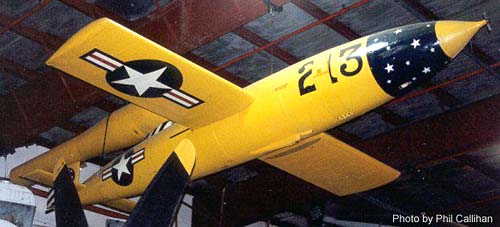so, how would you improve those weapons, given the technology of the day. would it be the range? the relibilty, would it be the way they were used. the info i have read said that 1/3 of this weapons blew up before reaching their target. so please give me your ideas, i am eager to know
For the A4, the von Braun guys were designing a “A8” a V2 with lengthened tube and different fuel.
Proximity fuse would have been nice, since V2 went too deep into the ground before exploding.
More priority to the U-boat V2 launch platform. Couple of dozens V2s launched to New York would have been morale boost for germans.
_
Oh yeah! The awesome Prufstand XII.
Cost. The V-1 wasn’t all that bad a design from a manufacturing point of view, but the V-2 was awful. Had they got some decent production engineers in on the party early enough with enough authority they could have made about 10 times as many for the same resources.
Unfortunately for them, their system denied manufacturing types any authority, kept them out until the last minute, and in any case the only good production engineers in the world were in the US.
JB-2 Loon, the american V-1
The Loon was the U.S. Navy’s copy of the German V-1. The U.S. Army Air Forces’ copy was designated JB-2. Intended for launching from ships against ground targets, the Loon had a pulse jet engine, a range of 150 miles, and was tracked by radar and controlled by radio. All Loons built were used in tests after the war. None were fired in combat.
The Loon was the Navy version of the JB-2, the copy of the German V-1 developed by the Army Air Forces (AAF) beginning in 1944. As with the V-1, the AAF intended the JB-2 to be a ground-launched missile used against ground targets. The AAF started flight tests in October 1944. The Navy developed interest in the AAF program shortly thereafter, intending to launch the missile from escort carriers with guidance from either shipboard or airborne radar.
Formally, the Navy’s project was initiated under the Bureau of Aeronautics in April 1945 and at that time the missile was designated the Loon. (Initially, the Navy also designated the Loon as KGW-1 then in 1946 redesignated it as KUW-1.) The Bureau of Aeronautics received some JB-2s from the AAF, and in June 1945 contracted with Republic Aviation for 151 missiles. The XM-1 system (using a slotted tube powder catapult) was selected for the launching system.
The Loon was 27 feet long and had a wing span of 18 feet. It carried a 2,100 pound warhead and weighed 5,020 pounds with the warhead and fully fuelled. Powered by a PJ 31-1 pulse jet which developed a gross thrust of 850 to 900 pounds at a specific impulse of about 1,100 pounds per second, the Loon had a 180 gallon tank and could use any gasoline-type fuel.
Control sufaces on the airframe consisted of rudder and elevators only. The Loon was tracked by radar to the target and was controlled by radio. Stabilization was provided by 3 air-driven position and rate gyros. An aneroid unit and magnetic compass controlled altitude and course through the gyro system
In late 1945, tests of the XM-1 system using dummy Loons were conducted at Point Mugu Naval Base in California. Several operational tests of the missile took place at this base in early 1946. Directives were then issued in March 1946 to develop a launching capability from submarines. Submarine launchings started in February 1947 from the U.S.S. CUSK.
Several months later, the U.S.S. CARBONERO joined the tests and acted as the control and tracking station. Based on the successful results of these tests, the Navy directed in August 1947 that submarine launchings continue through 1949 to develop terminal guidance procedures and tactical concepts for the Regulus, a submarine-launched guided missile with a range of 500 miles that was then under development.
In late 1948, directives were issued to develop a launching capability from surface vessels as well. The U.S.S. NORTON was selected as the platform, and four successful launchings from her took place in 1949 and 1950. The Loon project was cancelled after the last of these
With a maximum range of 150 miles, the Loon was launched at a minimum speed of 220 m.p.h. and climbed at a rate of 500 to 1,000 feet per minute to the altitude set on its altimeter. The optimum altitude in flight was between 2,000 and 4,000 feet, and the optimum speed in flight 400 m.p.h.
The Loon was one of the first guided missiles built by the U.S. Navy. Knowledge gained from its testing onboard submarines and surface ships led to the subsequent development of more advanced guided missiles which were deployed with the fleet
Picture of a JB-2 ‘Loon’ being loaded onto its launch frame
and the example on exhibit at the Air & space museum


thank you for all thae info, i am very thankful for it. do any of you have any more info on the a8. all i know is what is stated here. was it a development of the a4b?
